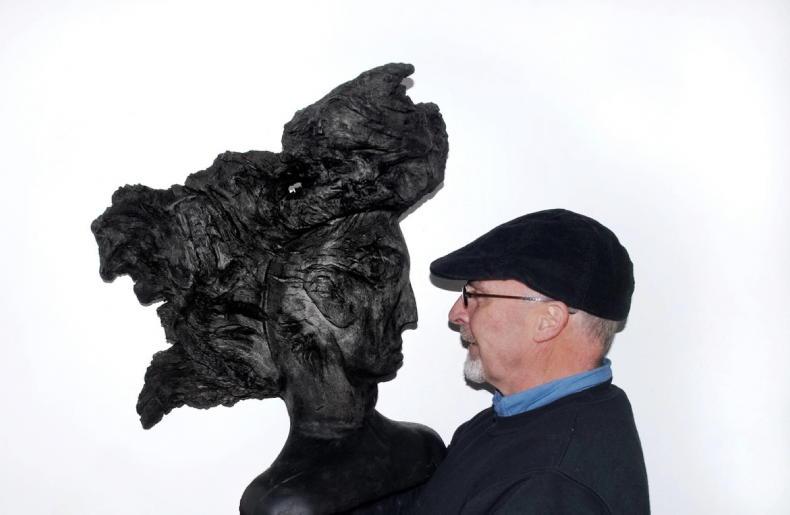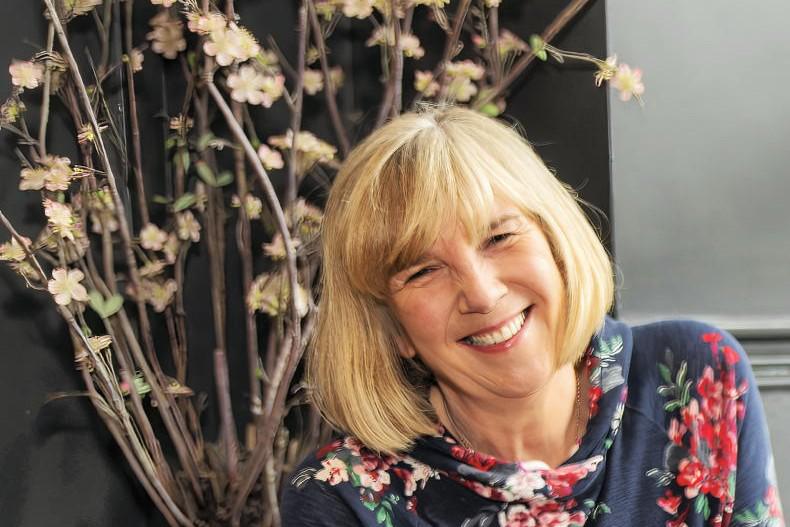What led you to pursue an artistic career?
I’ve always been quite an arty person, even from when I was in school. I am originally from Dublin, but then moved to London where I was a builder for 30 years.
After some time, I decided I wanted to go back to Ireland and study art properly. I had an interest in working with nature and I wanted to see where that took me.
I enjoyed working with ordinary wood, but gradually I became obsessed by bog oak. Now, I am working out of my studio in the Glen of Imaal in Wicklow.
What led you to working with bog oak specifically?
I became interested in working with bog oak specifically because of the spirit and the history that is in the pieces.
To work with a material that is nearly 5,000 years old is an extremely rare and interesting type of art. Once I started to work with it, I kept learning more about its history and complex texture. The pieces are jet black, which are great for sculpting.
Can you describe your creative process
My creative process may be quite different and slow compared with other artists.
I go into the Bog of Allen, which is one of the oldest bogs in Ireland. It lies between the River Liffey and River Shannon.
I then pull pieces out which are soaking wet and dirty. I then drag them home to start the long drying process.

Eamonn Heffernan.
When it comes to design, sometimes I see an animal’s head, like a horse or bird's head for example. Whatever comes through nature I work around it to try follow what’s in nature and the character of the piece.
Half of the process is probably cleaning the wood and getting into the centre. This is mainly done by using a wire brush on a drill. Then, I then start to work with angle grinders and chisels.
One thing that is also important is the architecture of the piece. I make it stand soundly on a base by working with stone and metal. I always say it’s very hard to beat nature, if there is something there great, but if not it’s also ok to just let it be.
Where do you get your artistic inspiration from?
When it comes to artistic inspiration, I suppose I have always had an eye for it. I personally get a lot out of going into nature and seeing how it moulds the earth.
I studied art and the history of art in UCD, which I got a lot of inspiration from. I also spent a good bit of time in the Hugh Lane Gallery.
What has been your biggest achievement so far?
My biggest exhibition would be one I done in Sydney around four or five years ago now. I had to ship 18 large bog oak pieces in a container for an exhibition in Sydney. Thankfully, everything went ok and the pieces looked great.
What advice would you give someone who wants to pursue an artistic career?
For advice, I’d say definitely study the old masters in all mediums. Whether you are painting, sculpting or designing, just go and look at the real thing.
Also try to see as much local art as you can by going around and looking at different exhibitions.
Eamonn’s work can be found at https://wicklowmarketplace.ie/stalls/eamonn-arts/
Read more
Students graduate from innovative management development programme
What led you to pursue an artistic career?
I’ve always been quite an arty person, even from when I was in school. I am originally from Dublin, but then moved to London where I was a builder for 30 years.
After some time, I decided I wanted to go back to Ireland and study art properly. I had an interest in working with nature and I wanted to see where that took me.
I enjoyed working with ordinary wood, but gradually I became obsessed by bog oak. Now, I am working out of my studio in the Glen of Imaal in Wicklow.
What led you to working with bog oak specifically?
I became interested in working with bog oak specifically because of the spirit and the history that is in the pieces.
To work with a material that is nearly 5,000 years old is an extremely rare and interesting type of art. Once I started to work with it, I kept learning more about its history and complex texture. The pieces are jet black, which are great for sculpting.
Can you describe your creative process
My creative process may be quite different and slow compared with other artists.
I go into the Bog of Allen, which is one of the oldest bogs in Ireland. It lies between the River Liffey and River Shannon.
I then pull pieces out which are soaking wet and dirty. I then drag them home to start the long drying process.

Eamonn Heffernan.
When it comes to design, sometimes I see an animal’s head, like a horse or bird's head for example. Whatever comes through nature I work around it to try follow what’s in nature and the character of the piece.
Half of the process is probably cleaning the wood and getting into the centre. This is mainly done by using a wire brush on a drill. Then, I then start to work with angle grinders and chisels.
One thing that is also important is the architecture of the piece. I make it stand soundly on a base by working with stone and metal. I always say it’s very hard to beat nature, if there is something there great, but if not it’s also ok to just let it be.
Where do you get your artistic inspiration from?
When it comes to artistic inspiration, I suppose I have always had an eye for it. I personally get a lot out of going into nature and seeing how it moulds the earth.
I studied art and the history of art in UCD, which I got a lot of inspiration from. I also spent a good bit of time in the Hugh Lane Gallery.
What has been your biggest achievement so far?
My biggest exhibition would be one I done in Sydney around four or five years ago now. I had to ship 18 large bog oak pieces in a container for an exhibition in Sydney. Thankfully, everything went ok and the pieces looked great.
What advice would you give someone who wants to pursue an artistic career?
For advice, I’d say definitely study the old masters in all mediums. Whether you are painting, sculpting or designing, just go and look at the real thing.
Also try to see as much local art as you can by going around and looking at different exhibitions.
Eamonn’s work can be found at https://wicklowmarketplace.ie/stalls/eamonn-arts/
Read more
Students graduate from innovative management development programme









SHARING OPTIONS